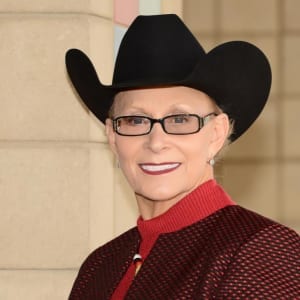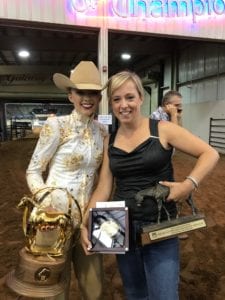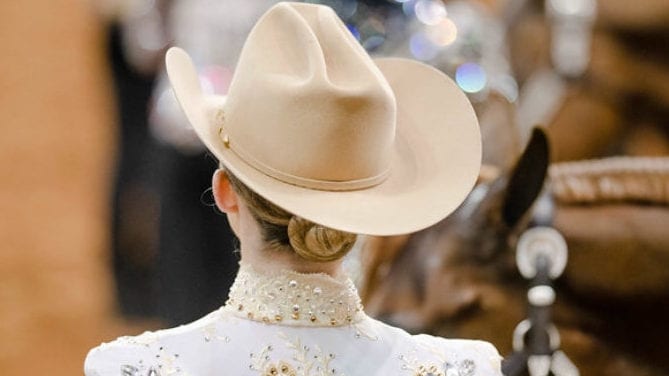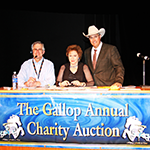You are in the warmup ring, and your horse is banded and brushed to perfection with just a little bit of baby oil on his nose for a shiny touch. The anticipation is putting butterflies in your stomach as you watch the competitors in front of you do their quarters, trying to map out the pace of the ring steward.
Then, your turn comes. You walk to cone A with confidence, looking ahead. With a nod, you are off, completing a stellar pattern. But then, as you finish your 360-degree turn, you walk around the following cone on the wrong side…disqualified.
This is an unfortunate reality for many participants. They practice day in and day out, but then come short on the competition day. How can this be prevented?
Two of the top showmanship instructors share their tips on how to practice smarter, not harder to accomplish that perfect pattern without any faults.
 Charlene Carter’s Top Three Tips
Charlene Carter’s Top Three Tips
Know Your Rule Book
“I think one of the most important things that people don’t do is know the rules,” Carter says.
If you do not know the point system, it is hard to know what to do in a showmanship pattern to get the highest score possible. “They need to know the rules and what they are going to be penalized for and what they are going to get credit for. When you do not, it is tough to get to the top of the game.”
This is a simple practice technique that someone can do from almost any location, and it will significantly benefit them when they get to a show.
Practice the Setup
“The judges are now breaking down the setup and the inspection as different maneuvers,” Carter explains. This makes it where a competitor must nail that setup to get the desired three points, whereas before, they could gain some points back on the inspection if the setup was not as precise and fast as needed.
To get a nice setup, Charlene “walks the horse forward and then says ‘Woah’ right before one of the front feet hit the ground, which will make the diagonal back leg be in a good position to push it back to make it parallel with the opposite leg. Once you practice that enough from a walk, it will become instant. Then, you can start doing it from a trot.”
When setting up after a trot, it is good to “build” at the end before stopping to get a good, even hoof placement.
Departure
“You want the horse light and responsive; you want the horse just to follow you,” Carter says. If they will not go forward, Charlene pushes them away, pulls them toward her, and then pushes them away again to make them respond to the lead. Then, she comes back quiet and asks for the transition again.
“People just need to practice with the horse departing right on time with them,” Charlene adds.
A nice departure can make a pattern so much crisper and set a competitor apart from other participants in a class.
 Shannon Vroegh’s Top Three Tips
Shannon Vroegh’s Top Three Tips
Practice Pieces
“Anticipating comes from running a pattern too many times,” Shannon states.
Instead, Shannon suggests practicing in pieces. With this, you would solely work on setups, backs, spins, etc. individually. “What we do is go out and school, 15-20 spins, walk transitions, extended trots, a bunch of backs, and like 30 setups. I think the more you mix that up and run pieces instead of doing something in a specific order, the less they get bored. At a show, we go over the pattern enough for a person to feel comfortable.”
Vroegh continues, “This is different for everyone, but around 1-5 times is usually enough. By practicing in shorter, more fixated parts, it allows the horse to keep his or her mind in tune with the maneuvers instead of anticipating an actual pattern.”
Squaring Your Set
“Judges want to see someone go into that ring and know what they are doing to make their horse square during a setup; it is essential,” Shannon says. “I think people need to focus less on the quickness of the set and more on the squareness of that set.”
Having a speedy, aligned setup is ideal, but Shannon would rather you take an extra step to get the preciseness than have a fast, inaccurate setup. “People need not lose sight of the intention of a setup where the horse looks very nice and square and can be presented as a halter horse at that point.”
Comfort Zone
Just like you need to practice until you feel good about your routine, you need to show until you are comfortable in the ring. Having that experience of showing will ultimately make you feel more confident in front of a judge or steward.
“One thing you cannot teach in practice is how to not be nervous in the show pen,” Shannon adds. “Showing enough to get more comfortable is very important to me. This class, more than any, is about being personable with someone you don’t know.”
Shannon also encourages her students to face their fears by having uncomfortable conversations with people in their lives aside from horses so they can try to duplicate that feeling and know how to react to it.









